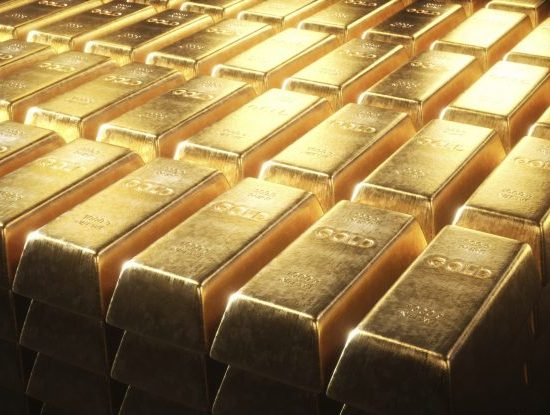 |By Matein Khalid| This was the ghastliest week for global risk assets since September 2011. Not even 290,000 new US jobs in December could negate the raw fear on Wall Street generated by the 10% fall in Shanghai, a yuan depreciation, market meltdowns of 6 – 7% in Tokyo, Hong Kong, Frankfurt, Mumbai and New York. Four months ago, I had published a KT article titled “History’s first Made in China global recession”. Last week the financial markets vindicated my fear.
|By Matein Khalid| This was the ghastliest week for global risk assets since September 2011. Not even 290,000 new US jobs in December could negate the raw fear on Wall Street generated by the 10% fall in Shanghai, a yuan depreciation, market meltdowns of 6 – 7% in Tokyo, Hong Kong, Frankfurt, Mumbai and New York. Four months ago, I had published a KT article titled “History’s first Made in China global recession”. Last week the financial markets vindicated my fear.
The end of two term US Presidents terrify me. In 1990, the Reagan bull market morphed into the post Kuwait war bear market and banking crisis. The bull market of the Clinton era blew up in the 2011 Silicon Valley tech bust and Enron/Pentagon/9/11 bear market. The end of George W Bush’s eight years in the White House culminated in Lehman’s failure and the Crash of 2008. Now Obama’s eight years on the world stage will end and Mr. Market has the worst first week risk spasm since 1932 at the height of the Great Depression. Black swans? North Korea. Iran. Saudi Arabia. Venezuela. Daish. Boko Haram. Donald Trump. The Queen’s at Ascot, the Tories are in power but all is not well with the world.
China’s economic slowdown is not new news so the Shanghai/Shenzehn crash had more due to flawed securities/circuit breaker policies and liquidity shocks. As usual, the Communist Party responded to market chaos by banning strategic sales. Wicked. The Deng/Mao/Xi version of Red Robber Chopsticks capitalism. Let a thousand thugs bloom. Shanghai A shares is a retail casino, not a real, liquid, valuation driven, institutional flows based, regulated stock market like London or New York. In any case, non dedicated funds fled China after the August crash. The smoke signals from the Politburo and investor herd psychology, not corporate profits or even central bank profits, will determine the fate of the Shanghai stock markets. Any fund manager still overweight emerging markets since 2011 should seek a new career as a circus clown or a shawarma grill operator. This much, at least, is certain, even in Magic Kingdoms and Magic Planets.
China’s credit crunch means investment Armageddon in sovereign junk credit, emerging markets and commodities. After all, it was no coincidence that Brent/West Texas crude dropped 11% last week. I was at a CFO conference last year where the CFO’s in the audience all voted that oil would trade in a 50 – 60 range. Poppycock, I pleaded from the panel stage $20 – $30. The room roared with laughter. Wonder who is laughing now? Not me, since I know so many of these investors will hemorrhage cash in 2016.
The yuan decline only demonstrates that China has joined the global currency wars. In the 1930’s, this was called “beggar thy neighbor devaluations” – and China’s trade neighbours are Taiwan, Japan, the Republic of Samsung and China’s ally is the evil, murderous, nuclear armed House of Kim.
The Chicago Volatility Index is at horrific 26 and Wall Street’s pendulum of greed and fear (not my friend CLSA’s Chris Wood’s blog!) tells me that US equities are grossly oversold. It is surely significant that the three and six month volatility futures trade below 10. Of course, I realise that the technical violations, breadth and lack of sector leadership are all negatives for the “buy on dip” arguments.
Donald Trump’s 45% tax on Chinese imports is so stupid that I cringe that he is a fellow Wharton alum. Compared to Trump, Ted Cruze is a raving socialist. I believe Cruz will get the nomination but, as in 2008 and 2012, The GOP will lo¬se in a landslide to the Democrat’s anointed queen Hilary Clinton, the 45th President of the United States.
The 2009-15 Obama bull market saw the S&P500 index triple in value. US equities were slammed in 2015 by pressure on earnings and King Dollar could now pressure margins. I expect the S&P 500 to test August lows near 1867 and then make a bid to take out supply at 1975. If any of the dethroned FANG’s (especially Amazon or Netflix) miss earnings, watch out. Fund managers are now like Victorian surgeons, when in doubt, they cut it out.
Currencies – The epic meltdown in the Canadian dollar
Trotsky once said that revolution is impossible until it becomes unthinkable. I feel the same way about currency devaluations. That is why I went bearish on the Japanese yen in late 2012 at 85 when Shinzo Abe entered the world stage, bearish the Indian rupee at 45 in 2011 when Subbaro bowed to Sirji Chidambaram and reflated M2 by a shocking 20%, short Euro at 1.36 when the Bundesbank panicked and grudgingly allowed Dottore Draghi to deflate the Euro (lira?) with money printing and short the Canadian dollar at 1.06 as oil crumbled along with Uncle Sam – Ottawa yield spreads. Canada has plunged to 1.42. Now what?
The easy money on the King Dollar trade has been made but the greenback supercycle trend is only in its fourth year. Awful global growth, strong US job/housing markets, China risk, plunge in crude/copper, stress in Wall Street high yield debt market, US industrial recession, a plunge in world trade all tell me this is no time to abandon the King Dollar macro idea, so wildly profitable since mid 2013. As long as central bank divergence in Washington, Tokyo and Frankfurt continues, the US dollar remains “buy on dip”, as it was against the Euro at 1.12 in December.
My most successful strategy trade in 2015 was, of course, the short against the Canadian dollar, thanks to my need to constantly hedge loonie assets and remit funds to the Dauphin in Montreal. The Canadian dollar depreciated 17% against the US dollar in 2015. I begged my friends, colleagues and relatives who own homes in Toronto, Montreal and even Vancouver to hedge loonie risk since late spring 2014. The Canadian dollar has fallen 30% since I began writing my anti-loonie warnings in this column. Time heals all wounds, true – but never, ever in the world currency market. “When in trouble, double” is insane and hope is not a strategy, as so many Gulf investors who rashly invested currency in unhedged Canadian homes (the petrodollar snowbirds!) have learnt to their bitter cost.
Since I believe we are in a period of protracted low oil prices, I doubt if the Canadian dollar can even rise to 1.30 in 2016 though at 1.46, the “value investor” DNA in me will begin to nibble on the long side on the loonie, probably by borrowing in yen or Swissies. The Fed and the Bank of Canada are on divergent policy paths and Uncle Sam – Canuck bond spreads are the widest since 2007. January is usually the best month of the year to be short loonie. However, the epic 32% fall in the Canadian dollar has made it hugely attractive against other commodity currencies in the world directly exposed to China risk, such as the Australian dollar or Brazilian Real. The Swiss franc is the most overvalued G-10 currency in the world, so a long loonie funded by a Helvetica bank overdraft makes strategic sense to me.
The Canadian economy has not revived convincingly due to the drag from mining/oil and gas, even though the cheap loonie will revive exports to a growing US economy. Capex is mediocre but there is momentum in business services and even construction. Canada faces high consumer debt, weak wage growth and potential credit downgrades in Ontario and Quebec. My fear is that the collapse of the loonie will pass through to inflation, which could be the highest among the Western economies in 2016.
This could provoke a Bank of Canada rate hike in summer 2016, especially if the Fed Funds rate rises 100 basis points. As long as the Canadian overnight base rate remains 0.5% and economic data points remain anemic, Governor Poloz at the Bank of Canada will not shadow the monetary normalization at the Federal Reserve. This means the Canadian dollar’s path of least resistance is down to 1.46 – 1.48. The Liberal government of Justin Trudeau will avoid a financial squeeze on the economy at all cost, even if core inflation rises above 2%. A Bank of Canada rate cut is unlikely. The easy money on the short Canadian dollar has been made. It now time to nibble loonie longs against the yen, Swissie and Aussie. Another funding currency for a Canada long? The Singapore dollar as the trade, property and credit time bomb in Southeast Asia explodes with a vengeance in 2016.
Market View – Making and losing money in property cycles.
Property cycles have been a recurrent investment theme in the history of world finance. There were credit boom and busts, leveraged speculation and offshore capital flows (from frontier provinces under the control of imperial legions – Judea to Britannia, Noricum to Illyria and Gaul) in the property markets of Octavian Caesar’s Rome. The merchant bankers of Lombard Street and Moorgate financed he great aristocratic family owned real estate developments in Georgian London. So today the Grosvenors (the dukes of Westminster) in Mayfair, Belgravia and Pimlico and the Earl Cadogans own Chelsea.
Real estate is actually an ecosystem of micro markets, each with it own unique dimensions of supply, demand and perceived value. The macro forces that shape property cycles are diverse. For instance, the Dubai government’s decision to open home ownership to expats and the flotations of Amlak, Tamweel and (earlier) Emaar were the real catalyst in the 2002-2008 Dubai home price boom.
Yet a spectacular rise in home prices was amplified by the ten fold rise in UAE commercial bank issuance of offshore medium term notes in London’s wholesale bank funding and capital markets. Offshore funding enabled UAE banks to finance 30 – 40% annual asset growth as property prices surged while the Bernanke Fed engineered zero interest rates. The failure of Lehman Brothers in September 2009 was a traumatic event for interbank lending and froze bank new issues in the London money markets. This abrupt fall in cross-border bank funding led to the epic fall in local property prices in 2007-10, even though the UAE had no subprime mortgages or securitized toxic CDO instruments in its property finance constellation. An investor unable to understand the nuances of international banking and capital markets would have been unable to asses risk, value or time the Dubai property market cycle.
In a similar vein the rise in home prices in 2012-14 were due to Arab Spring related safe haven flows and regional capital that grasped the potential of Dubai’s steep discount to global gateway cities such as London and Hong Kong, where prime apartment values can easily top 20,000 AED a square foot.
Demographics plays a critical role in property cycles. The postwar baby boom and no new home construction after Pearl Harbor to VE Day led to the golden age in US home price rises. Technology has been another recurrent theme in property cycle investing. Train schedules to the City of London created fabulous opportunities to invest in the “stockbroker belts” of Surrey and Berkshire (the royal borough of teenage toffs in top hats down the river from Windsor Castle!) and the Chunnel/high speed rail links will change the commuter/demographic landscape of east Kent. Air BnB and Uber, the rise of green technology and smart buildings, E-commerce, all means investors can no longer ignore the digital disruption dimensions of real estate.
Affordability, like beauty is in the eyes of the property market beholder. So the establishment of the DIFC and the influx of my tribe of international finance to Dubai (barbarians literally at the Gate!) transformed the micro-markets of Downtown, JLT, Marina and Palm Jumeirah. The collapse of the Russian rouble after Putin’s Crimean Anshluss gutted Russian demand for sun and sand pied-à-terre in the Palm in 2014-15. World events shape local markets. The UAE dirham peg means Dubai property prices fall when King Dollar runs amok in Planet Forex, as happened in 1983-85, 1997-99, 2008-9 or since summer 2014.
Preferences and tastes change over time. My mother thought living in a five bedroom villa in Jumeirah was a necessity of life. I morphed from boy to man in tiny studios in the East Village, Soho and Tribeca hoods in lower Manhattan. Suburban McMansions and expat ghettos horrify me. Millennials who witnessed the US housing bust of 2008 prefer to rent, not buy, the reason Avalon Bay REIT was such a spectacular investment.
I remember Kings Cross as an area of grungy fringe clubs in the dark Victorian era railway warehouses. Now Kings Cross is the yuppie wonderland of North London, the new home of Google, AOL and Brittanic techies. Thanks to Silicon Fens startups, Cambridge was the best performing British city for real estate. It is no coincidence that San Francisco, epicenter of Silicon Valley, was the best property market in the US in 2015. Yet, despite the oil crash, the Dallas Case Schiller also rose 10% while energy hub Houston suffered. The secret? Dallas diversified its economic base. Houston did not.




